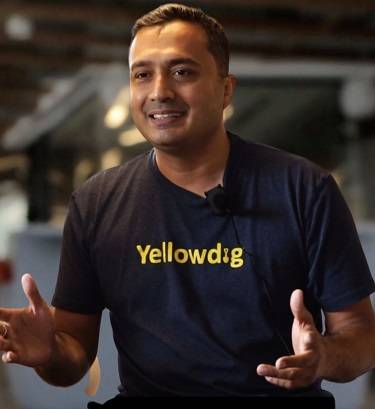Yellowdig: Transforming the learning experience through conversations
Shaunak is the founder and CEO of Yellowdig. Yellowdig is a community-driven active learning platform adopted by over 130 colleges and universities, K12 schools, and corporate training clients. Yellowdig’s mission is to transform every classroom into an active, social, and experiential learning community. Shaunak graduated with a degree in mechanical engineering from IIT Bombay and completed his graduate studies at the Massachusetts Institute of Technology. Prior to founding Yellowdig, Shaunak spent a decade advising global companies on technology, strategy, and growth. Excerpts:
Conception of Yellowdig
Shaunak’s idea of starting Yellowdig was to improve the student experience by creating a platform that combines academically relevant content with features they are familiar with from Facebook and Twitter. He laments, “We identified that students are not building relationships and connections in their learning environments. Learning has often looked like a solo endeavour, even when there are elements like discussion boards where instructors assign students to post once and comment twice because they are writing mini-essays to their instructor not actually conversing. Real connections to peers and instructors are vital to improving student success and retention.”
Shaunak calls it a “social and experiential learning platform” — focused on active learning. “We are living in a world of networks where people naturally connect with one another based on their interests and passions. That’s basically what Yellowdig is doing. You can see the evolution of those networks in courses.”
Yellowdig’s Strategy
To stay on top consistently, EdTech companies should ensure the products they are creating are adaptable and enable their users to be adaptable. For example, Yellowdig can enable users to wade through the uncertainty of modality switching because Yellowdig communities created a point of consistency for all class modalities.
Platform to foster meaningful interactions
Yellowdig has been touted as a platform between students and their teachers—in-person, blended, and online courses alike. It’s Engage platform has an easy-to-use interface that brings the best of social media, leaving the worst behind. There is virtually no learning curve, as it is a modern and intuitive experience. It is used across all modalities because no matter if students are meeting in-person or online to learn, class time is limited and Yellowdig enables asynchronous connections. The way the feed works is that recent discussions come to the top, like being in the front of the class at your own ease – enabling all students to shine. “The true secret is the gameful approach that makes learning fun and rewarding, without having the teacher constantly having to encourage participation. Our patented point system encourages discussions that are relevant – based on actual student interest, rather than being forced down. Questions, articles, blogs, videos, can all be easily shared in the community.”
A Passionate Leader
“I’m most passionate about improving education globally. I want to create as big of an impact as possible, helping students everywhere get the most out of their education and make it to graduation so that they can go on to achieve their dreams and goals.”
Leadership Traits
Though he looks at the big picture, he loves the details. “I’m always open to talking to any member of the company and I’m excited about new and fresh ideas. I aim to lead by example, always working diligently to improve Yellowdig.” He opines that leaders can overcome the fear of failure by accepting that they are going to fail. “For example, the first product we launched when I was an excited new entrepreneur, did not get the engagement we expected.”
Edtech Start-ups – Future Beyond
He urges the edtech companies to be aware of the tightening budgets that colleges and universities will have as students stop to enroll in the typical four-year higher education institutions. “They need to be aware that the typical student is more dissatisfied now than ever before. If you’re not providing a product or service that is addressing the underlying issues that institutions and students are facing, then you are likely going to be left behind as an edtech of the past.”
Success Mantras
Shaunak asks entrepreneurs to keep striving to do their best and try to find meaning in the work they do, no matter how small or large, or how difficult the situation is. “It’s easier to be motivated, grow, and be recognized for your contributions if you are motivated by the impact you create.’’

Company: Yellowdig
Website: www.yellowdig.co
Management: Shaunak Roy, Founder & CEO
Founded Year: 2015
Headquarters: Philadelphia, PA
Description: Yellowdig is an online learning experience driven by peer collaboration, gamification, and data science.




